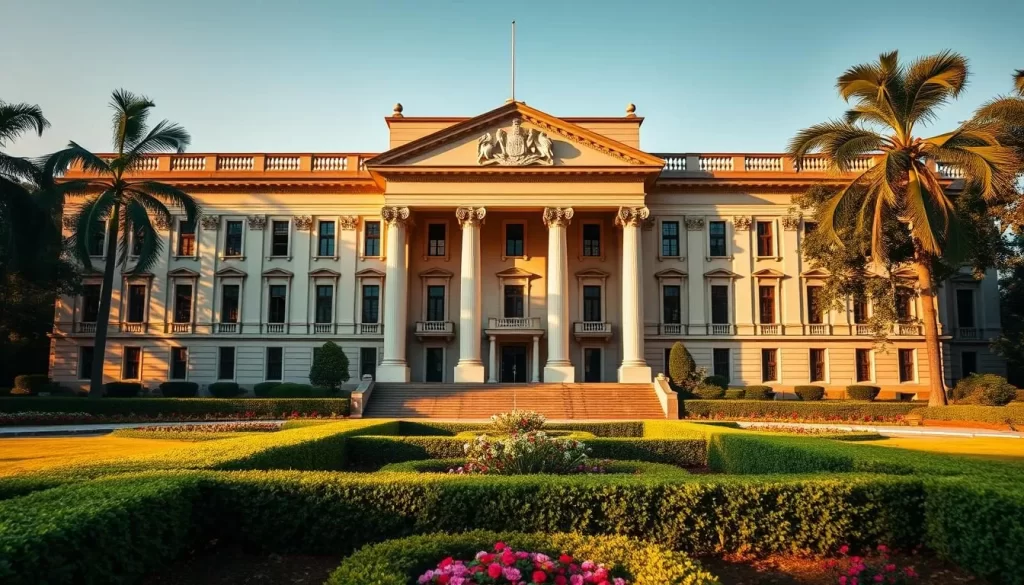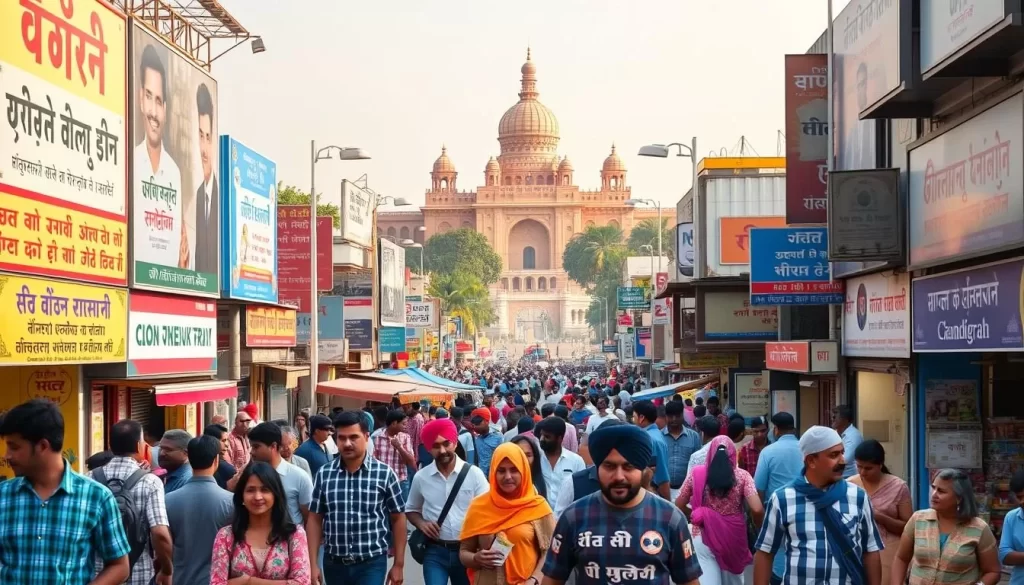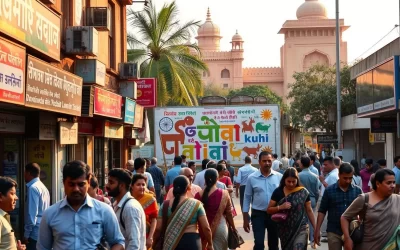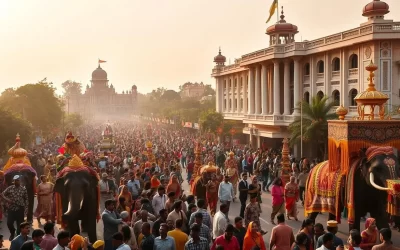You’re about to explore the unique cultural melting pot that is Chandigarh, a city that serves as the capital for both Punjab and Haryana states. As you delve into its linguistic identity, you’ll find that English is the sole official language, a status that reflects the city’s historical context and administrative framework.
While English holds official status, the majority of the population speaks Hindi (73.60%), followed by Punjabi (22.03%). This blend of languages is a result of the city’s history and its role as a capital for two states. As you examine the linguistic landscape, you’ll gain insights into how languages function in various domains, including government, education, and daily life.
Understanding the language dynamics in Chandigarh is valuable for both residents and those interested in exam preparation and India’s administrative frameworks. You’ll discover how this Union Territory maintains its multilingual character, making it an interesting case study in India’s diverse linguistic landscape.
Chandigarh’s Linguistic Landscape
The city’s linguistic landscape is shaped by its history and cultural background. As a planned city, Chandigarh’s development was influenced by its role as a capital for both Punjab and Haryana.
The Planned City and Its Cultural Background
Chandigarh’s unique status as a planned city has influenced its linguistic makeup since its establishment in the 1950s. The Punjab New Capital Periphery Control Act, 1952 was enacted to maintain the rural character of the surrounding area.
Language Diversity in Chandigarh
The city’s demographic composition contributes to its multilingual character, with significant populations speaking Hindi, Punjabi, and English. Key aspects of Chandigarh’s language diversity include:
- A blend of local and official languages.
- Influence of neighboring states on language usage.
- Prominence of English in administrative and educational contexts.

English: The Official Language of Chandigarh (UT)
The status of English as the official language in Chandigarh is a unique aspect of this Union Territory’s linguistic landscape. Today, English has the status of official language in several Indian states and union territories, including Chandigarh.
Official Status and Government Usage
English is used extensively in government operations, including administrative documentation, official communications, and legal proceedings. This is partly due to historical factors and the need for a neutral language in a region where both Hindi and Punjabi have significant cultural presence. As the official language, English facilitates governance and administration, ensuring clarity and consistency in official contexts.

English in Daily Life
In Chandigarh, English is not just limited to official contexts but is also widely used in daily life, from business transactions to media consumption. Residents of Chandigarh frequently use English in educational institutions, professional environments, and social interactions, making it an integral part of the city’s multilingual identity.
You can explore how English serves as a common language, bridging different linguistic groups within the city, and understand its role in shaping Chandigarh’s cultural and social dynamics.
Hindi and Punjabi: The Widely Spoken Languages
As you explore Chandigarh, you’ll notice that Hindi and Punjabi are the languages that bring the community together. The majority of the population speaks Hindi (73.60%), while 22.03% speak Punjabi.
Hindi Usage and Prevalence
Hindi plays a significant role in Chandigarh, serving as a lingua franca in daily communications, commerce, and social interactions. You can see how Hindi functions as a common language, facilitating interactions among people from different backgrounds. With over 73% of the population speaking Hindi, it’s clear that this language has a strong presence in the city.
Punjabi’s Cultural Significance
Punjabi holds considerable cultural significance in Chandigarh, reflecting the city’s deep connections to Punjab state and Punjabi heritage. You can experience this through various cultural expressions, literature, music, and religious practices. Punjabi is spoken by approximately 22% of residents, and it continues to thrive through cultural events and traditions.

Languages in Education and Public Services
In Chandigarh, the use of language in education and public services is a nuanced aspect of the city’s identity. You will find that the educational system accommodates multiple languages, reflecting the city’s cultural diversity.
Language of Instruction in Schools
Government schools in Chandigarh use textbooks in English, Hindi, and Punjabi, catering to the city’s linguistic diversity. The language of instruction policies vary across different types of schools, from government institutions to private and international schools, reflecting both practical considerations and cultural values.
Languages in Government Communications
Government services in Chandigarh navigate language preferences by balancing the use of English, Hindi, and Punjabi in official forms, public announcements, and government websites. This approach ensures accessible public services to citizens across different language backgrounds.

Conclusion: Chandigarh’s Multilingual Identity
As we have seen, Chandigarh maintains a unique multilingual identity despite having English as its sole official language. The city’s linguistic landscape is characterized by the harmonious coexistence of English, Hindi, and Punjabi. With Hindi being spoken by 73.60% of the population and Punjabi by 22.03%, Chandigarh’s language diversity reflects broader patterns in India’s linguistic diversity. You’ll gain insights into how language choices in Chandigarh connect to questions of identity, practicality, and governance, making it an interesting case study in language planning within India’s federal structure.
The above is subject to change.
Check back often to TRAVEL.COM for the latest travel tips and deals.






